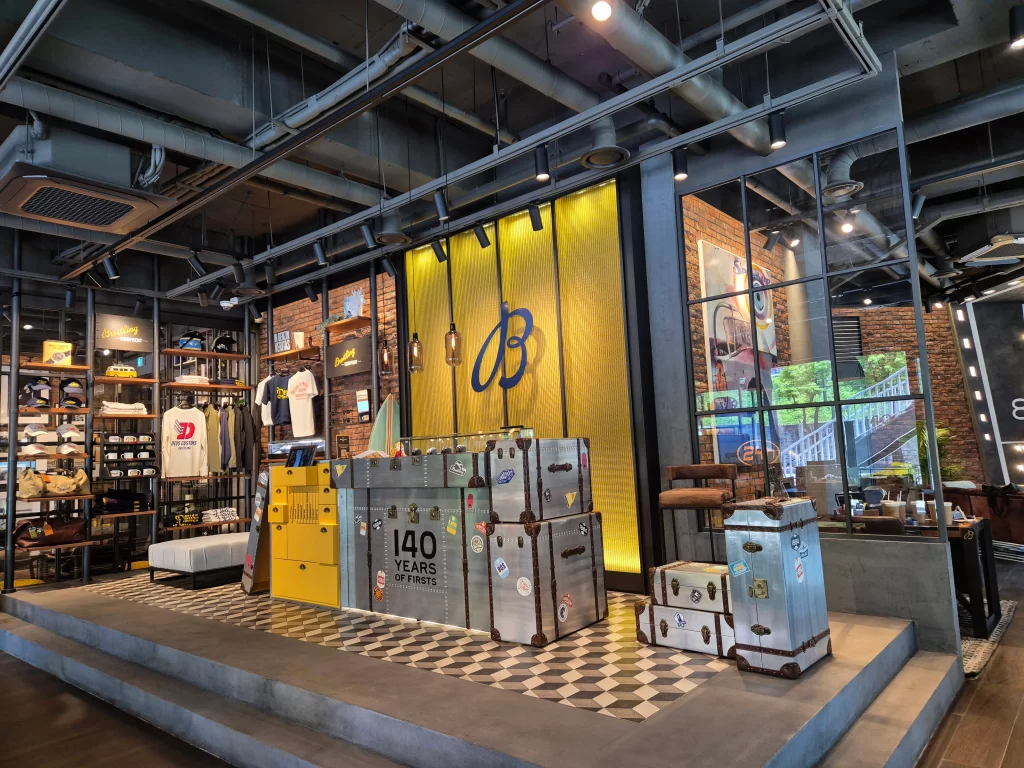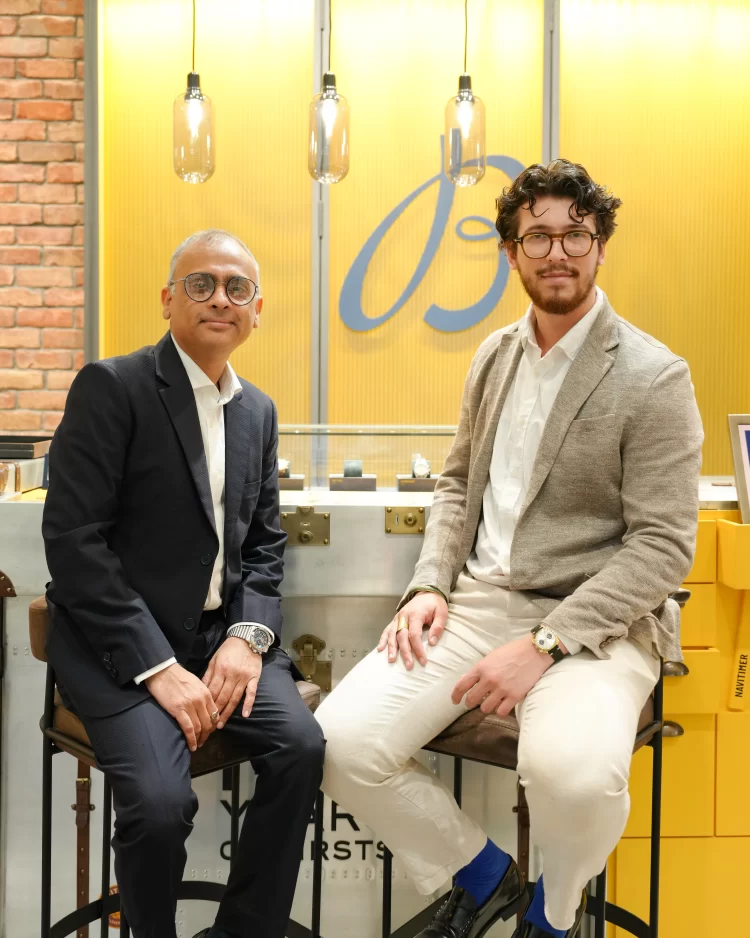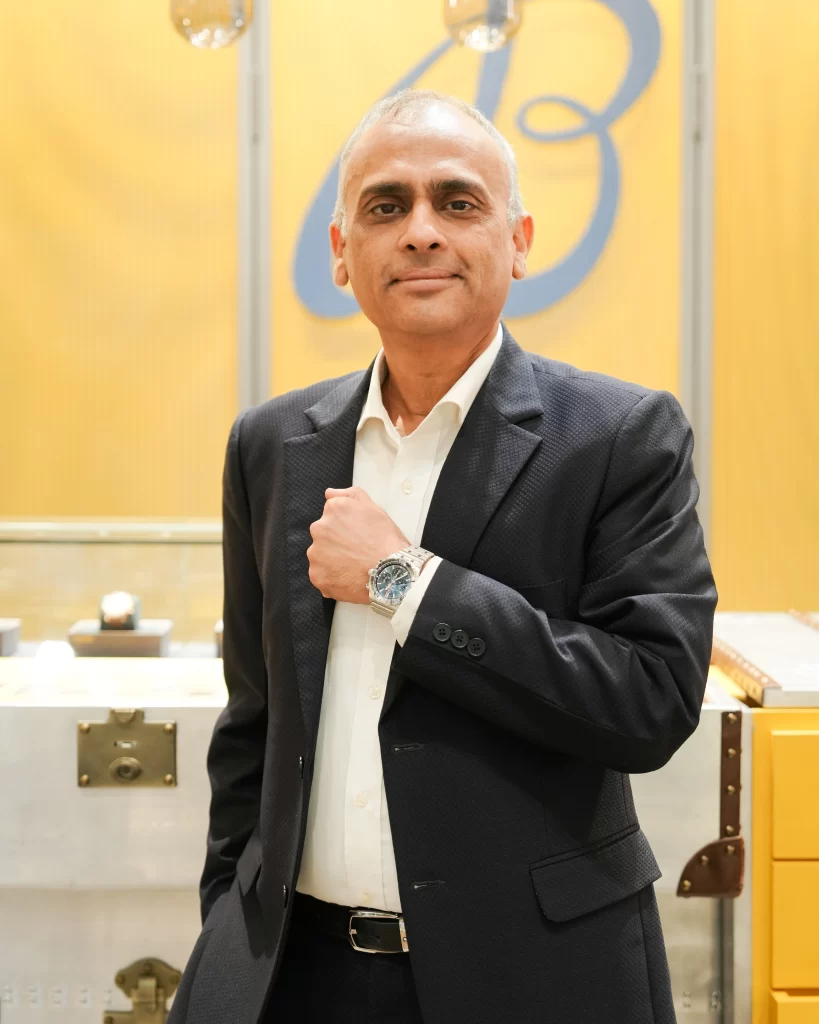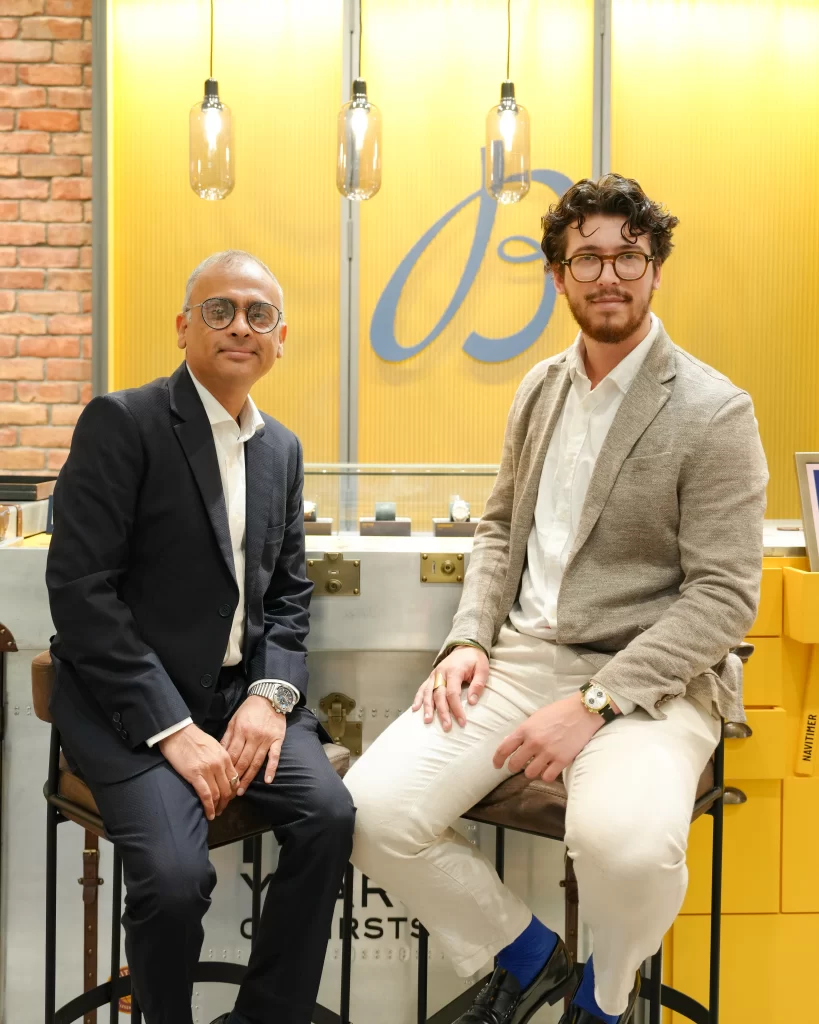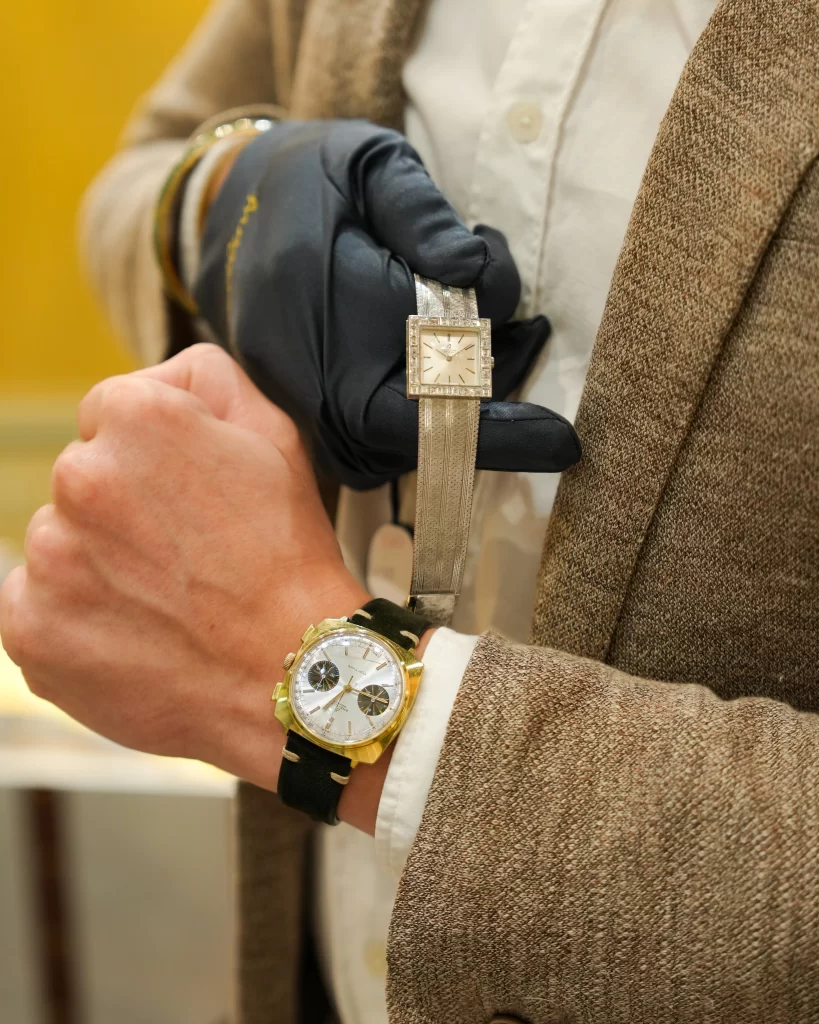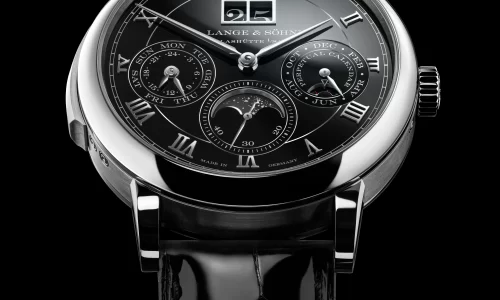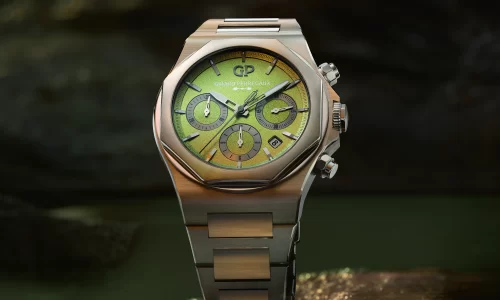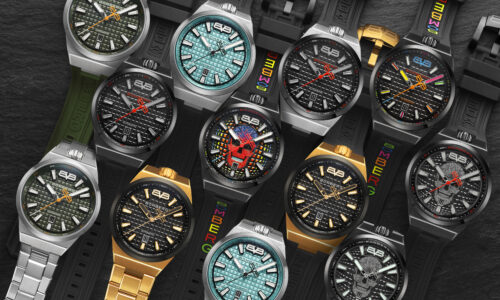As Breitling strengthens its position in the luxury watch industry, the brand’s commitment to heritage and innovation remains unwavering. With the Time Capsule Exhibition making its final stop in India, we had the opportunity to sit down with Paul Mulocher, Specialist, Breitling Heritage Team, and Pradeep Bhanot, Managing Director, Breitling India, for an in-depth conversation about Breitling’s legacy, innovations, and its expansion strategy in India.
A Journey Through Time with Paul Mulocher
We began our conversation with Paul, who greeted us warmly, his passion for Breitling evident from the start.
“Breitling has a rich 140-year history, but we have never had to reinvent ourselves,” he said, then he delved into the brand’s philosophy. “We stay true to our aviation, chronograph, and military roots while refining and innovating. Reinvention would imply breaking away from the past, but our strength is in maintaining continuity while evolving.”
As we explored Breitling’s groundbreaking innovations, Paul’s enthusiasm was infectious. “One of the biggest game-changers was in 1915 when we introduced the first independent chronograph pusher. Before that, all chronographs were controlled by the crown. We changed that forever. Then, in 1923, we developed the first double pusher, setting the standard for the modern chronograph layout. It was these kinds of advances that solidified our reputation for precision and functionality.”
He continued with excitement. “And then came the Navitimer in 1952. It became the ultimate pilot’s tool. Back then, pilots relied on mechanical flight computers, and the Navitimer allowed them to perform complex in-flight calculations. In a way, you could say it was the first smartwatch for aviators—long before smartwatches existed.”
Our discussion turned toward vintage Breitling pieces that collectors should keep an eye on. Paul, clearly an aficionado, spoke animatedly. “If you’re investing in Breitling, you have two approaches,” he explained. “Stick with the classics like the Navitimer and Superocean, which have steadily appreciated in value. Or look for hidden gems—watches with sub-dials at 6 and 12, for example. They’re extremely rare and not yet widely recognized.”
He smiled, recalling a few standout pieces. “The Reverse Panda Navitimer from the 1960s—worn by racing legends Jim Clark and Graham Hill—is one to watch. The Top Time from 1965, famously worn by James Bond in Thunderball, is another. And the first-generation Superocean from 1957? One of the most underrated dive watches of all time.”
Paul also highlighted Breitling’s commitment to engaging collectors. “We recently launched an annual vintage watch sale, a fantastic opportunity for collectors to own rare Breitling timepieces. Plus, our Then & Now pop-up museum in Zurich highlights how our past models inspire current collections. It’s a fascinating journey through time.”
Key take away: Follow Breitling’s heritage blog for expert insights.
Key Investment Pieces:
Vintage Navitimers – Prices are steadily rising, making them a low-risk investment.
Rare Breitling Models – Super Ocean (1957), Cosmonaute, celebrity-owned watches are increasing in value.
Unique Dial Layouts – Watches with rare chronograph placements are hidden gems in the investment world.
A few key milestones:
1915: First independent chronograph pusher – “Before Breitling, chronograph functions were controlled by the crown. Breitling changed that forever.”
1923: First double pusher – “This model defined the modern chronograph’s layout.”
1940s-50s: Cocktail watches – “An untold part of Breitling’s history, inspired by the founder’s love for fine jewelry.”
1952: Navitimer – “The first smartwatch. A pilot’s tool, enabling in-flight calculations.”
1960s: First diving chronograph with oxygen-consumption tracking – “A diver doesn’t need to track seconds but must know how much oxygen remains.”
1962 Cosmonaute—The first Swiss watch worn in space, even before the Omega Speedmaster landed on the Moon. It was developed for astronaut Scott Carpenter, featuring a 24-hour dial so he could distinguish between day and night while orbiting Earth.
The Growth of Breitling in India with Pradeep Bhanot
Switching gears, we spoke with Pradeep Bhanot, whose insight into Breitling’s expansion in India was equally compelling.
“India is one of the fastest-growing luxury watch markets,” Pradeep began, his voice full of conviction. “The median age here is just 28.1 years, and Millennials and Gen Z make up 40% of the population. These young consumers are fueling the demand for luxury watches. Collectors here are no longer just buying to own; they see watches as investment assets.”
When asked about Breitling’s retail strategy in India, Pradeep outlined the company’s ambitious plans. “Right now, we have four boutiques, but that’s just the start. We plan to expand to at least ten in the next two to three years. Our goal is to make Breitling the first choice for India’s rising class of collectors. While we are strengthening our presence in metros like Mumbai, Delhi, and Bangalore, we’re also focusing on tier-2 cities, which have significant growth potential. We see a strong appetite for luxury watches beyond the major urban centers.”
The conversation turned to digital expansion. Would Breitling introduce online sales in India? Pradeep considered the question carefully before responding.
“Globally, we are e-commerce ready,” he nodded. “But in India, luxury watches are still very much a touch-and-feel purchase. The boutique experience is important. Unlike fashion, where customers are comfortable buying online, luxury watches require an emotional connection. That being said, the brand may explore local e-commerce partnerships in the future or may eventually launch our own e-commerce platform. It’s a balancing act between tradition and modern consumer habits.”
One of Breitling’s unique marketing strategies for India is its lack of celebrity endorsements. When asked why, Pradeep’s response was immediate.
“Breitling has a different philosophy. Every Breitling customer is our brand ambassador. Instead of relying on celebrity endorsements, we focus on engaging with real collectors and enthusiasts—people who genuinely appreciate craftsmanship. Their passion speaks louder than paid endorsements. Our brand is built on authenticity and legacy, and we want our customers to feel like they are a part of that journey.”
Key take away: For now, the focus remains on physical retail expansion and enhancing the in-store experience for our customers.
Looking Ahead: Breitling’s Future in India
With its deep-rooted heritage, investment-worthy timepieces, and ambitious expansion plans, Breitling is poised for long-term success in India.
“The luxury watch landscape in India is evolving, and Breitling is evolving with it,” Pradeep said, his confidence unwavering.
As our conversation drew to a close, Paul left us with a parting thought. “Breitling has so much to offer—both what you expect and what you don’t. If you love watches, come explore our legacy. It’s a fascinating world, and we are thrilled to share it with the growing community in India.”
With the Time Capsule Exhibition making its final stop in India, this is the perfect moment for collectors and watch enthusiasts to experience Breitling’s craftsmanship firsthand. The future looks bright for Breitling in India, and for watch lovers.
As Breitling continues its journey in India, one thing is clear: it is here to stay, innovate, and connect with collectors on a deeper level.
What’s Next?
📍 Visit a Breitling boutique to explore their latest collection.
📍 Follow Breitling’s heritage blog to learn more about their history.
📍 Keep an eye out for India-specific limited editions coming soon!
